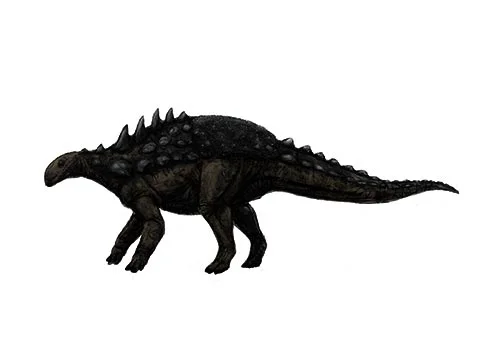Polacanthus (Many Spikes)

Po-la-can-thus
Richard Owen - 1865
Herbivore
Estimated 4.5 meters long
Armoured Dinosaur
Polacanthus foxii
United Kingdom, Isle of Wight, Sussex
Early Cretaceous, 130-125 million years ago
Polacanthus Facts
Polacanthus, meaning “many spines,” is a genus of herbivorous dinosaur that lived during the Early Cretaceous period, approximately 130 to 125 million years ago. It was a member of the group known as ankylosaurs, which were armored dinosaurs that had bony plates and spines protecting their bodies.
Polacanthus was first discovered in 1865 in the Wealden Formation of England by paleontologist Richard Owen. Since then, numerous fossils have been found in various locations around the world, including Europe, North America, and Asia.
Like other ankylosaurs, Polacanthus was heavily armored. Its body was covered in bony plates called osteoderms, which provided protection against predators. It also had a large, club-like tail that could be used as a weapon.
One of the most distinctive features of Polacanthus is its many spines. These spines, which protruded from its shoulders, hips, and along its back, likely served a defensive function. The spines could have deterred predators by making it difficult to attack or swallow the dinosaur.
Polacanthus was a medium-sized dinosaur, measuring approximately 4.5 meters (15 feet) in length and weighing up to 1,500 kilograms (3,300 pounds). It was a quadrupedal animal, meaning it walked on four legs, and its front legs were slightly shorter than its hind legs.
Based on the structure of its teeth, it is believed that Polacanthus was a herbivore that fed on tough vegetation such as ferns and cycads. It likely used its powerful jaws and beak to break down tough plant material.
In conclusion, Polacanthus was a fascinating dinosaur with many unique features, including its heavily armored body and many spines. As a paleontologist, studying fossils of Polacanthus and other dinosaurs helps us to better understand the diversity of life that existed on Earth millions of years ago.



